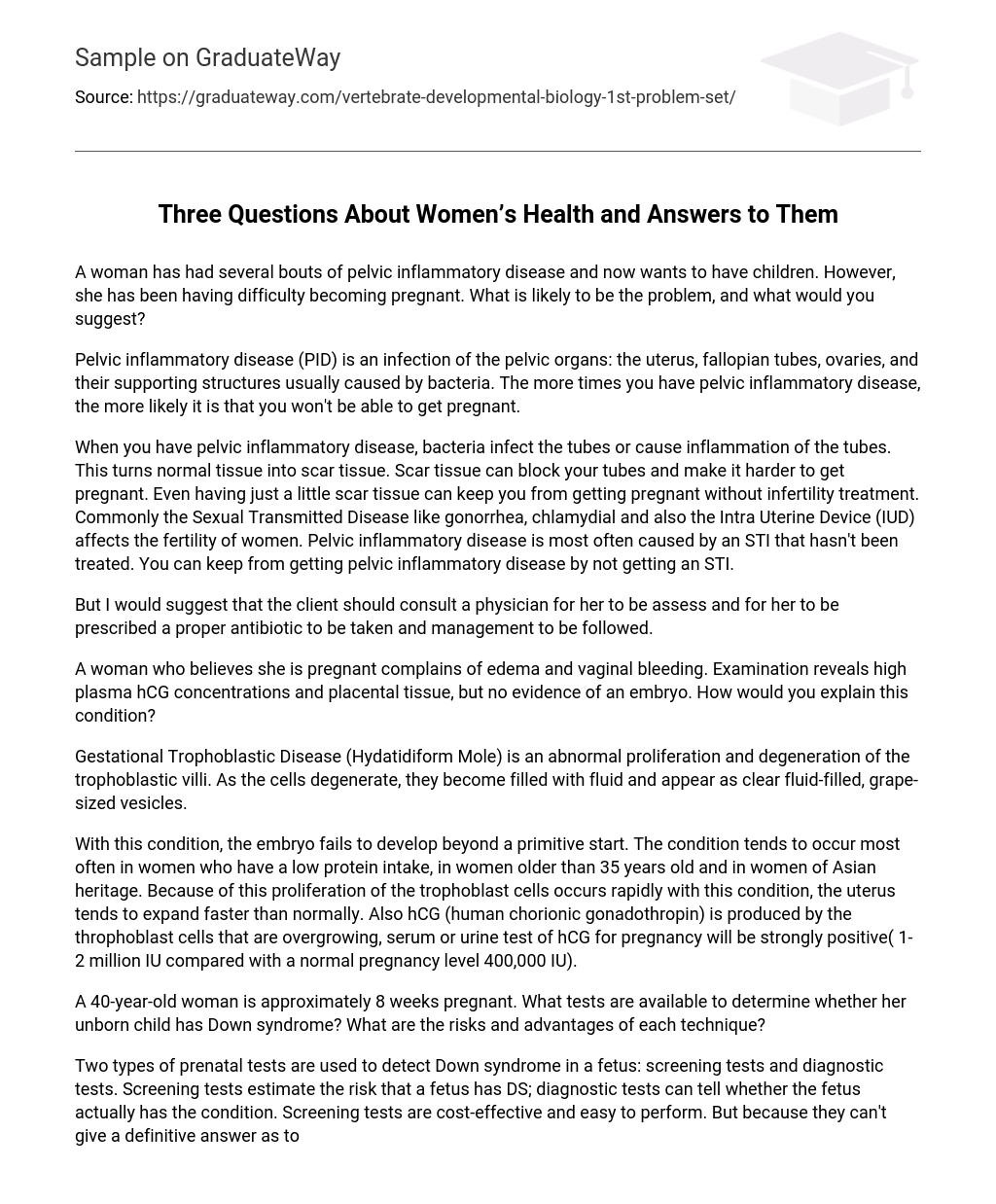A woman has had several bouts of pelvic inflammatory disease and now wants to have children. However, she has been having difficulty becoming pregnant. What is likely to be the problem, and what would you suggest?
Pelvic inflammatory disease (PID) is an infection of the pelvic organs: the uterus, fallopian tubes, ovaries, and their supporting structures usually caused by bacteria. The more times you have pelvic inflammatory disease, the more likely it is that you won’t be able to get pregnant.
When you have pelvic inflammatory disease, bacteria infect the tubes or cause inflammation of the tubes. This turns normal tissue into scar tissue. Scar tissue can block your tubes and make it harder to get pregnant. Even having just a little scar tissue can keep you from getting pregnant without infertility treatment. Commonly the Sexual Transmitted Disease like gonorrhea, chlamydial and also the Intra Uterine Device (IUD) affects the fertility of women. Pelvic inflammatory disease is most often caused by an STI that hasn’t been treated. You can keep from getting pelvic inflammatory disease by not getting an STI.
But I would suggest that the client should consult a physician for her to be assess and for her to be prescribed a proper antibiotic to be taken and management to be followed.
A woman who believes she is pregnant complains of edema and vaginal bleeding. Examination reveals high plasma hCG concentrations and placental tissue, but no evidence of an embryo. How would you explain this condition?
Gestational Trophoblastic Disease (Hydatidiform Mole) is an abnormal proliferation and degeneration of the trophoblastic villi. As the cells degenerate, they become filled with fluid and appear as clear fluid-filled, grape-sized vesicles.
With this condition, the embryo fails to develop beyond a primitive start. The condition tends to occur most often in women who have a low protein intake, in women older than 35 years old and in women of Asian heritage. Because of this proliferation of the trophoblast cells occurs rapidly with this condition, the uterus tends to expand faster than normally. Also hCG (human chorionic gonadothropin) is produced by the throphoblast cells that are overgrowing, serum or urine test of hCG for pregnancy will be strongly positive( 1-2 million IU compared with a normal pregnancy level 400,000 IU).
A 40-year-old woman is approximately 8 weeks pregnant. What tests are available to determine whether her unborn child has Down syndrome? What are the risks and advantages of each technique?
Two types of prenatal tests are used to detect Down syndrome in a fetus: screening tests and diagnostic tests. Screening tests estimate the risk that a fetus has DS; diagnostic tests can tell whether the fetus actually has the condition. Screening tests are cost-effective and easy to perform. But because they can’t give a definitive answer as to whether a baby has DS, these tests are used to help parents decide whether to have more diagnostic tests.
Diagnostic tests are about 99% accurate in detecting Down syndrome and other chromosomal abnormalities. However, because they’re performed inside the uterus, they are associated with a risk of miscarriage and other complications. For this reason, invasive diagnostic testing previously was generally recommended only for women age 35 or older, those with a family history of genetic defects, or those who’ve had an abnormal result on a screening test. Alpha-fetoprotein (AFP) is a substance produced by the liver that is present i amniotic fluid and maternal serum.





